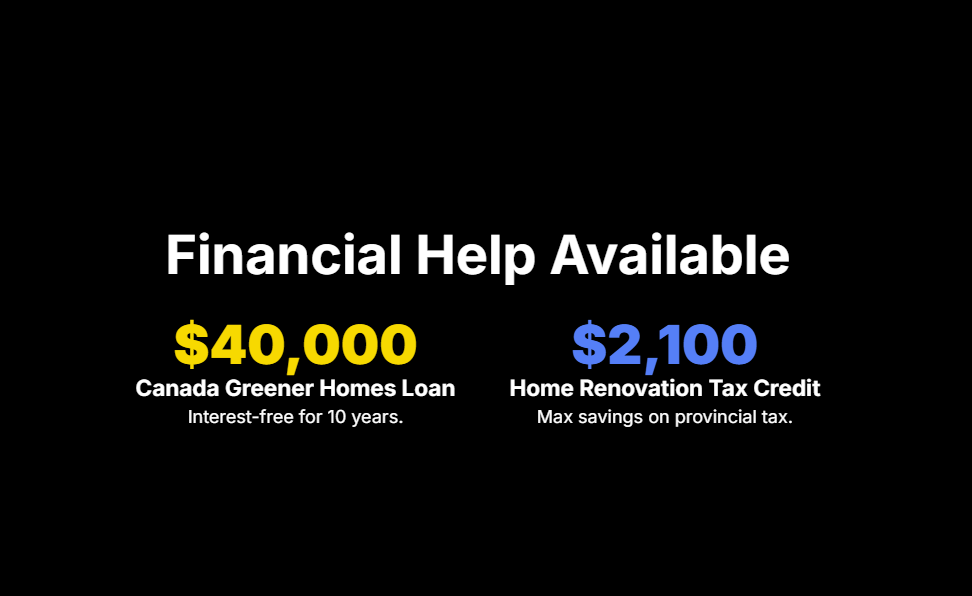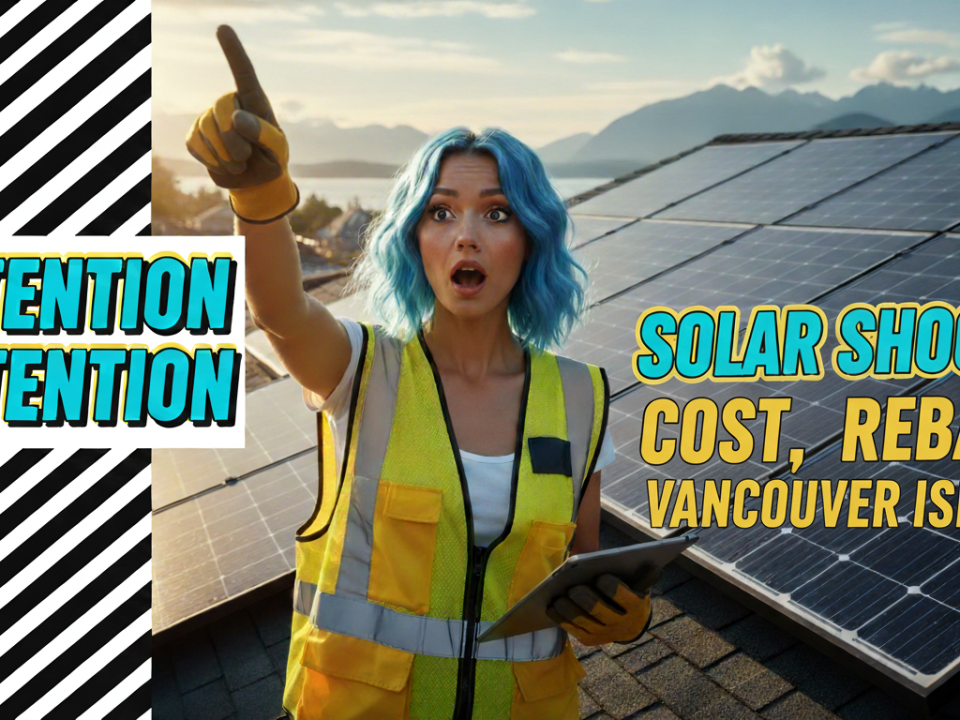
Solar Panels Alberta Guide 2025 + Calculator
August 7, 2025
Solar Panels Manitoba Cost Guide 2025 + Calculator
August 8, 2025So, you’re thinking about solar panels in Saskatchewan. Good on you. It’s a big step, and you’ve probably got a ton of questions. Is it worth the money? What kind of help can you get? What’s the catch? I’m here to walk you through it, friend to friend. We’ll look at the real costs, the actual savings, and the headaches you might run into.
Why Consider Solar Panels in Saskatchewan?
Saskatchewan gets a fantastic amount of sun—some of the best in Canada, actually. Cities like Regina and Saskatoon are prime spots for solar power generation. Tapping into that sunshine means you can produce your own clean electricity right on your rooftop. It’s about taking some control back from the utility company and locking in your energy costs for the future.

How Does Solar Energy Benefit the Environment?
Let’s be direct: burning fossil fuels is messy. Saskatchewan’s grid is heavily reliant on them, which means it has one of the highest greenhouse gas emissions per capita in the country. When you install solar panels, you’re directly cutting down on that pollution. Every kilowatt-hour (kWh) your system produces is one less kWh that needs to be generated by burning coal or natural gas. It’s a practical way to reduce your carbon footprint and contribute to a cleaner province.

Overview of Solar Energy Adoption in Canada
Across Canada, solar is picking up steam. Some provinces are moving faster than others, with strong rebate programs and high electricity rates making the switch a no-brainer. Saskatchewan has had its ups and downs with solar policy, but the underlying technology keeps getting better and cheaper. While the province is investing in large, utility-scale solar projects, the power for homeowners to generate their own clean energy remains a key part of the bigger picture.
The Cost of Solar Panels in Saskatchewan
Alright, let’s talk money. This is usually the first question people ask, and for good reason. The upfront cost of a solar panel system is a significant investment.

What is the Average Cost of Solar Panels in 2025?
In 2025, you can expect the average installation cost in Saskatchewan to be about $3.10 per watt. So for a standard-sized home system (usually 8 to 12 kW), the price tag before any incentives will be somewhere between $24,800 and $37,200.
Here’s a quick table to break that down:
| System Size (kW) | Estimated Cost (Before Incentives) |
|---|---|
| 5 kW | $15,500 |
| 8 kW | $24,800 |
| 10 kW | $31,000 |
| 12 kW | $37,200 |

How Do Costs Vary Across Saskatchewan?
The cost doesn’t change dramatically between Regina and Saskatoon, but you might see small differences based on the availability of installers and local permitting fees. The biggest cost variable isn’t your city, but the specifics of your home and the installer you choose.
What Factors Influence the Price of Solar Panels?
Several things determine the final price tag for your solar installation:
- System Size: The more power you need, the more panels you’ll install, and the higher the cost. Your energy needs are the main driver here.
- Equipment Quality: Not all solar panels are created equal. High-efficiency solar panels from premium brands will cost more than standard options. The same goes for inverters, which are the brains of your solar power system.
- Roof Complexity: A simple, south-facing roof is an installer’s dream. If your roof is steep, has multiple angles, or needs repairs, the installation cost will go up.
- Installer: Different companies have different overheads and pricing structures. Getting multiple quotes is key.

Financial Incentives and Rebates
This is where things get interesting. While the upfront cost is high, financial programs can make a huge difference.
What Government Programs are Available?
The big one right now is the federal Canada Greener Homes Loan. This program offers an interest-free loan of up to $40,000 with a 10-year repayment term. This doesn’t lower the total solar cost, but it removes the barrier of needing all that cash upfront. It’s a game-changer for financing your solar project.
Tip for the Greener Homes Loan: You must have a pre-retrofit EnerGuide evaluation done before you sign any contracts or start any work. Don’t skip this step!
Unfortunately, the Canada Greener Homes Grant of up to $5,000 is no longer accepting new applicants.
In some cities, you might find local help. For example, the City of Saskatoon’s Home Energy Loan Program (HELP) offers low-interest financing and, in the past, has included direct rebates for solar installation. Always check with your municipality.
Are There Any Tax Credits for Solar Installation?
Yes. Saskatchewan offers the Home Renovation Tax Credit. This allows you to claim 10.5% of your renovation expenses on your provincial taxes. For a solar project, you can claim this on up to $20,000 of the cost, which translates to a maximum tax saving of $2,100. It’s not a direct rebate, but it’s real money back in your pocket come tax time.
Net Metering in Saskatchewan

Understanding net metering is crucial because it directly impacts your savings.
When your solar panels produce more electricity than you’re using at that moment, the excess energy is sent back to the grid. SaskPower tracks this through a bi-directional meter. Here’s the catch: SaskPower only buys your excess power for about $0.075 per kWh.
Let’s compare that to what you pay for electricity, which is around $0.149 per kWh (plus a monthly service charge). You’re selling your power for half of what it costs to buy it back. This is the single biggest challenge for the financial return of solar in Saskatchewan.

How Can Homeowners Maximize Their Savings?
Because of the low net metering rate, the best strategy is to use as much of your own solar power as possible.
- Shift Your Load: Run your high-energy appliances like the dishwasher, washing machine, and dryer during the middle of the day when your solar production is at its peak.
- Consider a Battery: A home battery system stores your excess energy instead of sending it back to the grid. You can then use that stored power in the evening or during a power outage. Batteries add to the upfront cost but give you energy independence and maximize the value of every kWh you produce.
Installation Process and Considerations
Choosing the right people for the job is just as important as choosing the right equipment.

How to Choose a Reliable Solar Installer?
Don’t just go with the cheapest quote. A solar installation is a 25-year investment.
- Check Certifications: Look for installers with certifications from organizations like Solar Installers Canada.
- Read Reviews: See what past customers have to say. I spend a lot of time on SolarEnergies.ca reviewing companies like Prairie Sun Solar and others to see how they stack up in the real world.
- Get Multiple Quotes: I can’t stress this enough. Get at least three quotes to compare pricing, equipment, and warranties.
- Ask About Warranties: You should get a warranty on the panels (usually 25 years), the inverter (10-25 years), and the workmanship (1-10 years).
I remember helping a friend in Regina a couple of years back. He got a quote that was way cheaper than the others. It turned out the company was using low-quality panels with a poor warranty and wasn’t even properly licensed. We dodged a bullet there. A good installer will walk you through everything and won’t pressure you.

What to Expect During the Installation Process?
A typical residential solar installation takes just a few days.
- Site Assessment & Design: The installer will confirm all the measurements and create a final design.
- Permits: They’ll handle all the paperwork with your municipality and SaskPower.
- Installation: The crew will mount the racking, install the solar panels, and run the wiring to the inverter and your electrical panel.
- Inspection: A government inspector and SaskPower will need to sign off on the system.
- Commissioning: Once approved, you can flip the switch and start generating your own clean energy.
What Maintenance is Required for Solar Panels?
Solar panels are incredibly low-maintenance. They have no moving parts. In Saskatchewan, the rain and snow are usually enough to keep them clean. You might want to have them inspected every few years just to make sure all the connections are tight and everything is working as it should.
Return on Investment for Solar Panels
This is the bottom line: when will your solar panel system pay for itself?
How Long Until You See a Return on Investment?
With the current net metering rates and lack of a major provincial rebate, the payback period in Saskatchewan is longer than in other provinces. For most homeowners, you’re looking at 15 to 20 years.
However, if you’re in Saskatoon and can take advantage of a local rebate, or if you can shift your usage to consume most of your own power, you could shorten that period significantly. For businesses that use a lot of power during the day, the payback can be much faster, often under 10 years.
What is the Lifespan of a Solar Panel?
Your solar panels are guaranteed to produce power for 25 to 30 years. They do degrade slightly over time, losing about 0.5% of their efficiency each year. But even after 25 years, they’ll still be producing at about 85-90% of their original capacity.
How Can You Calculate Your Energy Savings?
Here’s a simplified way to look at it:
- Find out how much energy you use per year in kWh from your SaskPower bills.
- Estimate how much of that your solar system will produce. A 10 kW system in Regina might produce around 12,000 kWh per year.
- Multiply the energy you’ll use directly from your panels by the retail electricity rate (~$0.149/kWh).
- Multiply the excess energy you’ll send to the grid by the net metering rate (~$0.075/kWh).
- Add those two numbers together to get your estimated annual savings.
Challenges and Considerations
It’s not all sunshine and savings. There are some real challenges to going solar in Saskatchewan.
What are the Common Challenges with Solar Panels?
- The Net Metering Rate: As we’ve discussed, this is the biggest hurdle. It makes the financial case tougher.
- Upfront Cost: Even with financing, it’s a large investment.
- SaskPower Fees: Some homeowners have reported high fees for interconnection studies and grid upgrades required by SaskPower, which can add thousands to the solar cost.
How Does Weather Affect Solar Panel Efficiency?
Solar panels work on light, not heat. In fact, they work best in cool, sunny conditions, which Saskatchewan has in spades. Snow can cover the panels and stop production, but it usually slides off fairly quickly. The high number of sunny days per year more than makes up for the winter months.
Are There any Zoning Laws or Restrictions?
Generally, there are no major restrictions on residential solar. Your installer will handle the necessary building and electrical permits. If you live in a condo or a community with a homeowners’ association, you’ll need to check their rules.
Future of Solar Energy in Saskatchewan
So, what’s next for solar in the province?
What are the Emerging Trends in Solar Technology?
The technology is always improving. Bifacial panels, which can capture light from both sides, are becoming more common for ground-mount systems. Battery technology is also advancing rapidly, with prices expected to continue falling, making energy storage a more viable option for more people.
How is the Market for Solar Panels Expected to Grow?
SaskPower has a goal to increase its renewable energy capacity, and utility-scale solar is a big part of that plan. While the support for residential solar has been inconsistent, the underlying economics will continue to improve as panel costs fall and electricity prices rise. The demand for clean energy isn’t going away.
What Role Will Solar Energy Play in Saskatchewan’s Energy Future?
Solar will be a key piece of the puzzle. It’s a reliable and predictable energy source that complements wind power well. Whether it’s large solar farms or individual rooftop systems, solar energy will help Saskatchewan reduce its emissions and build a more resilient grid.
Conclusion
So, let’s bring it all together.

Is Investing in Solar Panels Worth It in 2025?
So, is solar worth it in Saskatchewan in 2025? Here’s my honest take:
- It’s a tough sell if… you’re looking for a quick financial win, and you live outside of a city with its own rebate program. The payback period is long, and the low net metering rate hurts the economics.
- It’s worth considering if… your decision is about more than just the immediate numbers—if it’s about energy independence, environmental responsibility, and protecting yourself from rising electricity prices over the next 25 years. The interest-free loan from the federal government makes it financially possible for many.
Best Case Scenario
The best-case scenario for going solar in Saskatchewan looks like this:
- You live in Saskatoon and can access a municipal rebate on top of the federal interest-free loan.
- You have a simple, south-facing roof with no shading.
- You can shift your electricity usage to the daytime to maximize self-consumption.
- You plan to stay in your home for the long term.
In this scenario, your payback period shortens, and your long-term savings are substantial.
What Steps Can You Take to Get Started?
- Analyze Your Power Bill: Figure out how much energy you use.
- Get an EnerGuide Evaluation: This is the first step for the Greener Homes Loan.
- Research Installers: Start looking for reputable local companies.
- Get Quotes: Contact at least three installers to compare your options.
Making the switch to solar is a big call, but it’s an investment in your home’s future. I hope this guide cut through the noise and gave you the clear information you need to make the right decision for you.
-Vitaliy Lano, SolarEnergies.ca Canada goes Solar




